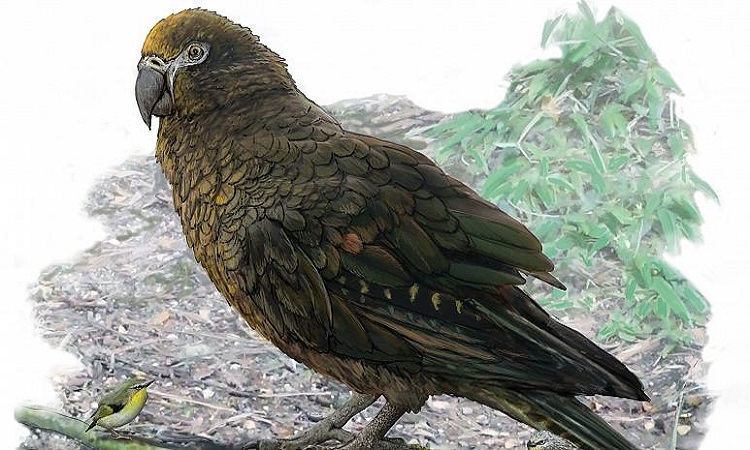The discovery is based on the identification of old tibiotarsus, these large bones placed between the femur and the tarsometatarsal of the paw of the birds. Two have been found, and none are complete. On the other hand, they were quite well preserved to allow researchers to certify their membership in a species of parrot that had never been recorded before. And what a parrot! According to initial analyses, this bird, found in a deposit about 19 million years old, was almost a meter high and could weigh up to seven kilos on the scale. The details of the study are published in the journal Biology Letters.
The heaviest parrot ever
Based on these early estimates, then this parrot – named Heracles inexpectatus – is simply the heaviest ever recorded in history. “Heracles had no doubt a considerable beak. He probably ate much more than modern parrots, says Mike Archer of the University of New South Wales (UNSW) in Sydney. Maybe he was eating other parrots. “
To give you a better idea of the size of this bird, note that it was about twice as massive as the kakapo, the most giant living parrot in our time. Note also that these nocturnal birds endemic to New Zealand, living on the ground, are in critical danger of extinction. Only 144 would remain in nature.
Other giants gone
Recall that a few weeks ago, a team of researchers announced that they had identified one of the largest birds in history in Crimea. Judging by the size of the femur discovered, paleontologists estimated that the species (Pachystruthiodmanisensis) could be more than 3.5 meters tall and weigh up to 450 kg. Which makes it – in terms of these proportions – one of the biggest birds to ever have existed.
Our planet has also sheltered other “giants.” Like The moa, in New Zealand, or the bird-elephant, on the island of Madagascar. Not to mention Dromornithidae from Australia. But there is “nothing” compared to Titan de Vorombe. The bird, which once roamed the African island of Madagascar, could weigh up to 860 kilos. It died about 1,000 years ago.




